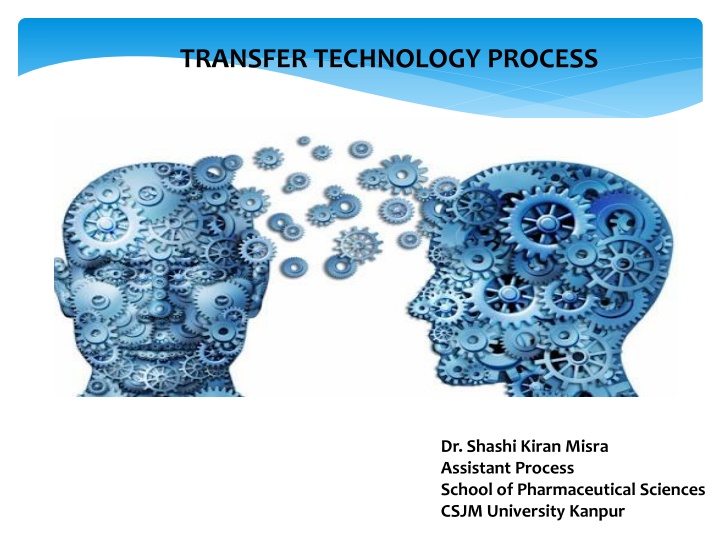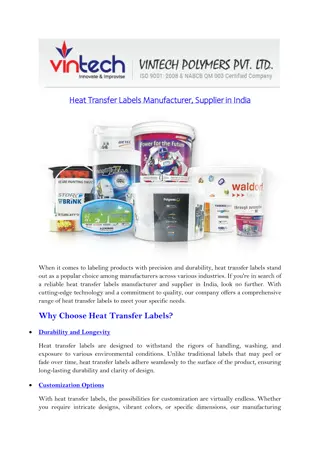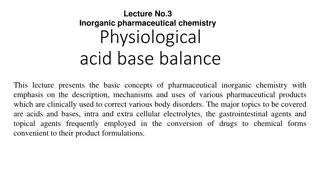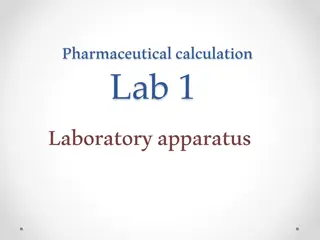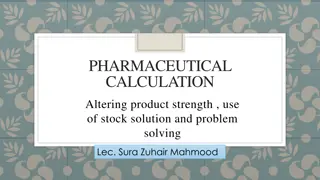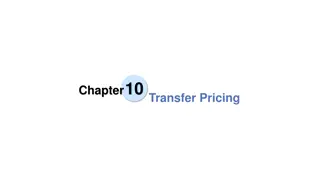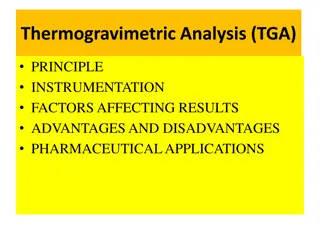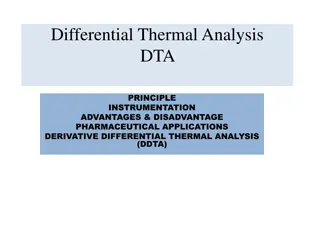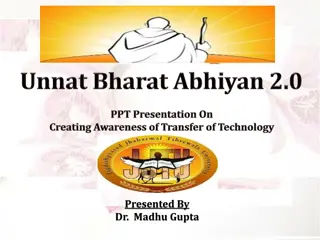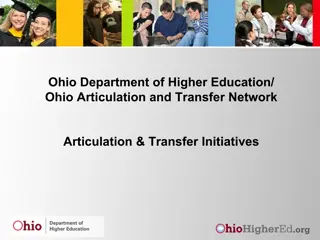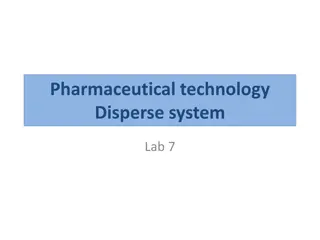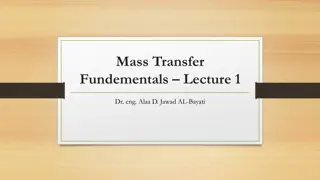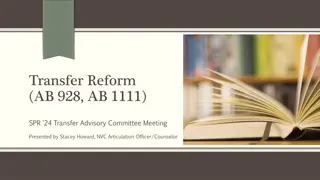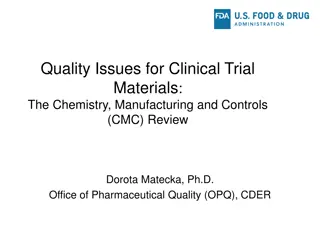Pharmaceutical Technology Transfer Process Guidelines
Production technology transfer involves joint development of product transfer protocol by sending and receiving units. Key components include API information, raw materials consistency, excipients details, and in-process controls. Guidelines ensure smooth process transfer and product quality.
Download Presentation

Please find below an Image/Link to download the presentation.
The content on the website is provided AS IS for your information and personal use only. It may not be sold, licensed, or shared on other websites without obtaining consent from the author.If you encounter any issues during the download, it is possible that the publisher has removed the file from their server.
You are allowed to download the files provided on this website for personal or commercial use, subject to the condition that they are used lawfully. All files are the property of their respective owners.
The content on the website is provided AS IS for your information and personal use only. It may not be sold, licensed, or shared on other websites without obtaining consent from the author.
E N D
Presentation Transcript
TRANSFER TECHNOLOGY PROCESS Dr. Shashi Kiran Misra Assistant Process School of Pharmaceutical Sciences CSJM University Kanpur
Production Technology Transfer Receiving unit and sending unit both should develop the product transfer protocol jointly to transfer the product related information. Information should be transferred according to the technical expertness of the staff and the manufacturing site capabilities to run the process smoothly.
INDUSTRIAL- INSTITUTIONAL INTERACTIONS
2)Active Pharmaceutical Ingredients (API): Sending unit should provide the drug master file (DMF) and other related information of the active materials. It may include the following information . Flowchart of the manufacturing process of the drug material Physical properties including bulk and tap density Moisture content including water activity Bioburden, endotoxin and sterility as required Solubility and pH of solution Particle size distribution and its dissolution profile Manufacturer and the supply chain of the material Other information like heat, light and moisture sensitivity 1.Raw Materials: The material used for manufacturing on receiving unit should have consistency with the material used at the sending unit. The properties of the raw material those can alter the quality of the product should be identified.
3)Excipients Excipients also have the considerable effect on the final product so their detailed information should also be provided by the sending unit to receiving unit. It may include the following information: Viscosity of material Flowchart of the manufacturing process of the drug material Physical properties including bulk and tap density Moisture content range Melting range Bioburden, endotoxin and sterility as required Ion strength of material Solubility and pH of solution Specific gravity Particle size distribution and its dissolution profile Manufacturer and the supply chain of the material Compliance with TSE and BSE requirements MSDS and heat, light and moisture sensitivity
In-process Materials and Finished Products Sending unit should provide the detailed information of manufacturing process, physical description, specification and in-process controls. History of the development of the product should also be provided for the further development or process optimization after the successful technology transfer. Information regarding the environment, health and safety should also be provided to the receiving unit. It should also include the information on product quality review, validation, stability and environmental conditions for manufacturing. Generally, trial batches are taken at the receiving unit to test the manufacturing parameters and capability of the manufacturing process before running the validation batch.
4.Packing Process and Cleaning Process All the information regarding the packing should be transferred as the manufacturing process. It includes the specification of foils or containers and closures, and other related information as design labelling, artwork and drawings. To prevent the contamination in the pharmaceutical products, it is essential the follow the adequate cleaning procedure. It can minimize the risk of cross-contamination during manufacturing. Receiving unit should validate the cleaning procedure and sending unit should provide the required information such as existing cleaning procedure, the solubility of all materials, therapeutic dose, the toxicity of the API, cleaning agents and recovery studies.
